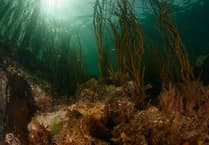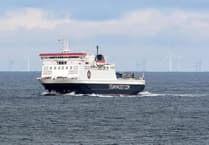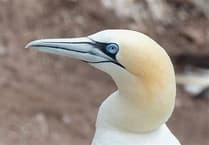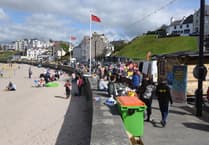As an island community we depend on the sea for so much - but it is also easy to take it for granted. In a monthly column, Dr Lara Howe, marine officer with the Manx Wildlife Trust, and Dr Peter Duncan, senior marine environment officer at DEFA, explore this underwater world and the lives of some of those who work there.
There is a good chance you have not heard of marine muds before, let alone seen them, but they are vital for the health of our seas and marine life, for our climate, and for our fisheries.
When we think of marine conservation it is easy to get caught up in high-profile campaigns to protect charismatic seascapes such as coral reefs and seagrass beds - but marine muds are equally as important and fascinating.
Marine muds can be found all over the world, from the shoreline to the deep sea.
In the sea around the Isle of Man, they are made up of rich sediments and are home to a myriad of creatures with many sheltering away below the mud’s surface.
The Irish Sea has two large muddy areas; one to the east of the Isle of Man towards Morecambe Bay, and one to the west known as the Western Irish Sea Mud-Belt (WISMB), around five miles off the coast of Peel and extending almost to the Irish coast. These muddy areas are important fishing grounds, and the Western Irish Sea Mud-Belt is the largest fishery for Dublin Bay Prawn – also known as scampi or langoustine – in European waters, with an estimated annual value of £12m.
This small species of lobster lives in burrows within the mud, only leaving at dawn and dusk to forage the sea floor for food, devouring anything from other shellfish to worms – even sea urchins.
Currently these prawns are mostly fished using bottom trawls, where a weighted net is towed along the seabed.
Whilst this is very efficient for catching prawns, it is also efficient at catching or harming any other creatures which are unable to escape the nets being dragged across the sea floor.
The Western Irish Sea Mud-Belt was recently found to be one of the most heavily trawled fishing grounds in the North East Atlantic region.
Marine muds are incredibly delicate ecosystems, where curious and fragile creatures such as sea pens – named because of its resemblance to an old-fashioned writing quill – stand in the mud on the seabed.
They wave their willowy appendages which they use to catch small creatures being carried along by water currents, preying upon smaller animals that get within touching-range of their stinging cells.
Worms, shrimps, and seashells also live within the mud, rooting through the sediments and devouring material that has rained down from the sunlit ocean above.
These mud-dwelling communities help to bind the muds together and mix the sediment in a process known as bioturbation.
The Western Irish Sea Mud-Belt is also important nursery area for the brown crab, whose females migrate to the mud patch to incubate their eggs.
Looking after these muddy ecosystems is crucial in our response to climate change, as they are natural carbon sinks, and the Western Irish Sea Mud-Belt is likely the Isle of Man’s largest store of carbon in the sea, known as ‘blue carbon’. Creatures in the sea store carbon, just as plants and animals do on land.
When these creatures die – or poop – these remains drift to the seafloor; some is consumed by other creatures, some broken down, and what is left can be buried in the sediments where it can store the remaining carbon for many tens of thousands of years.
Given how important these marine muds are for the long-term future of our fisheries, reducing climate change, and the overall health of our sea, both the UK and the Isle of Man Governments are exploring how best to look after these vulnerable habitats, while simultaneously supporting the long-term sustainability of the fishing community.
You can find out more about the Manx Blue Carbon Project, which includes better understanding the marine mud in Manx waters, at www.netzero.com/bluecarbon




